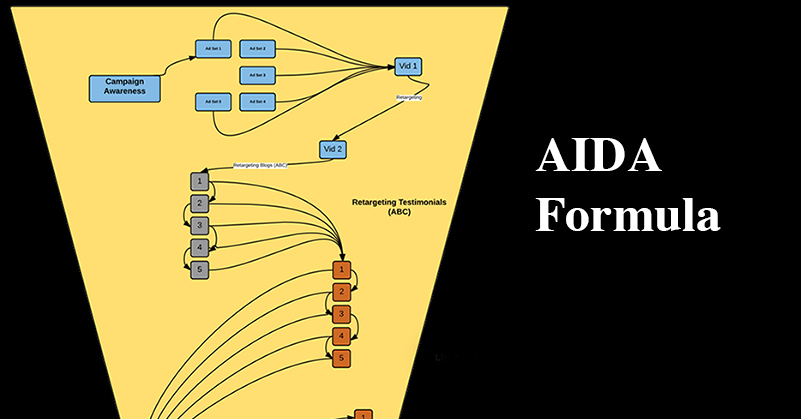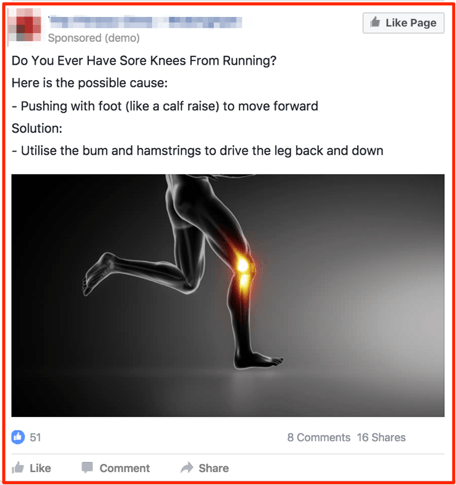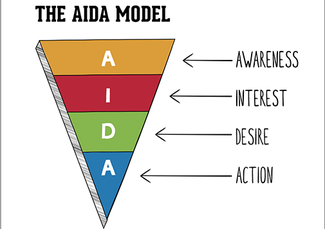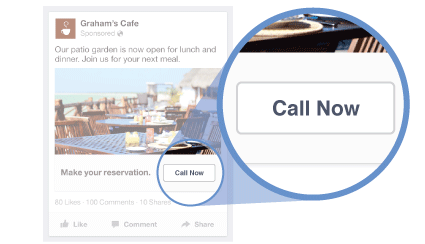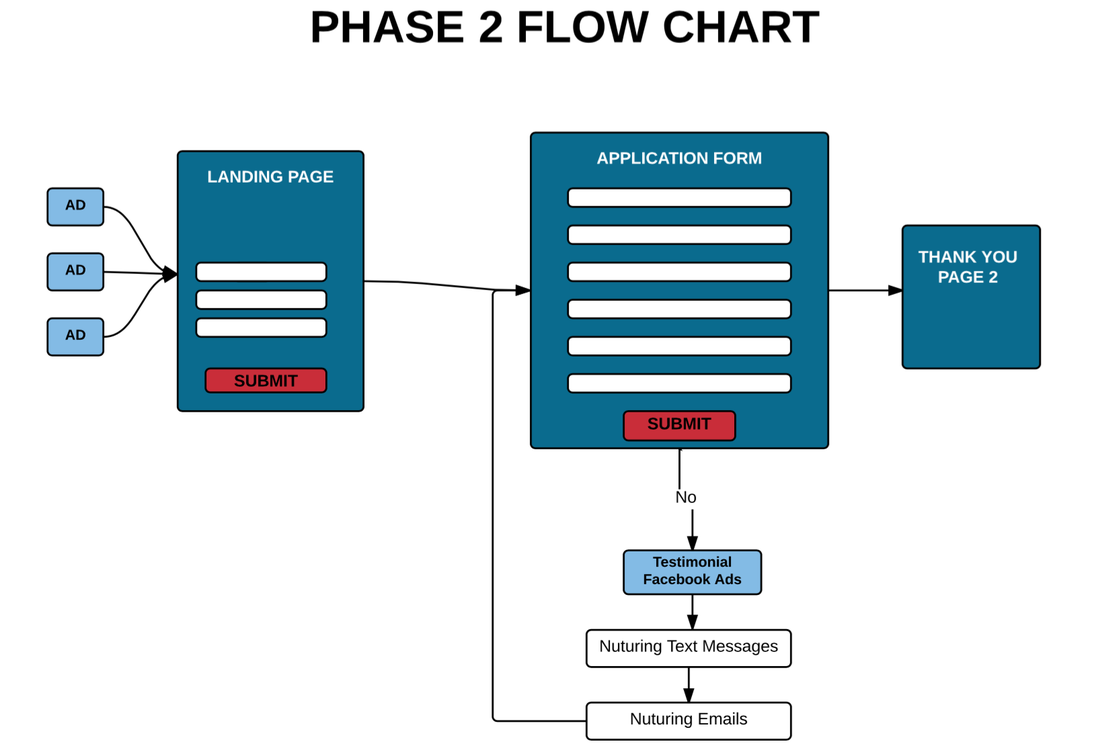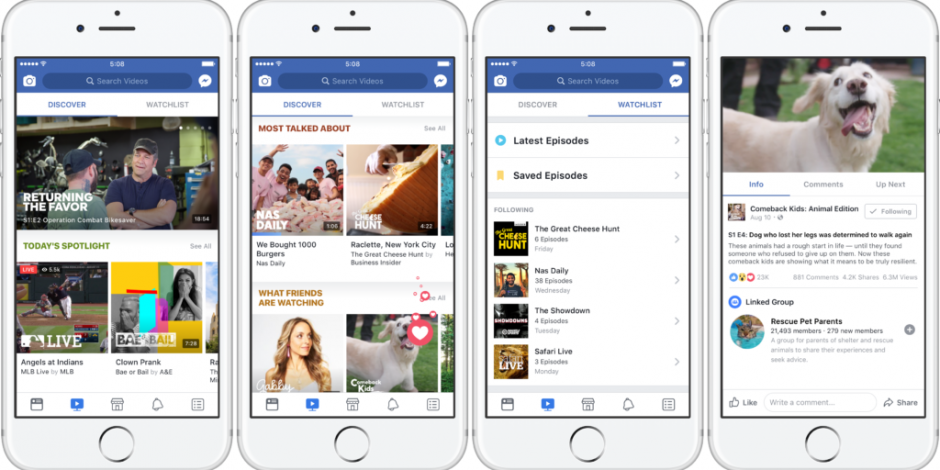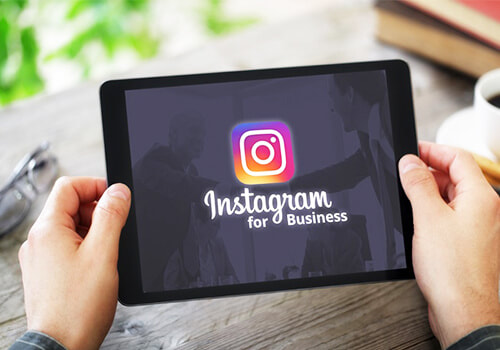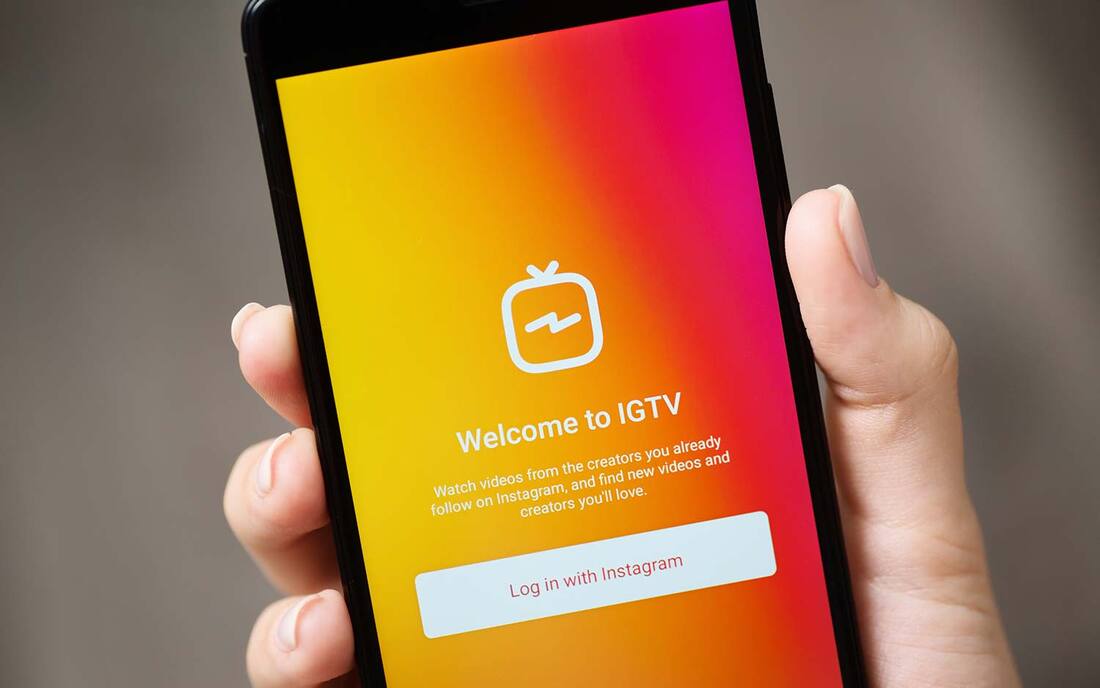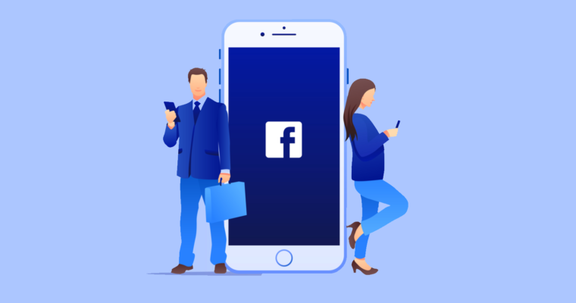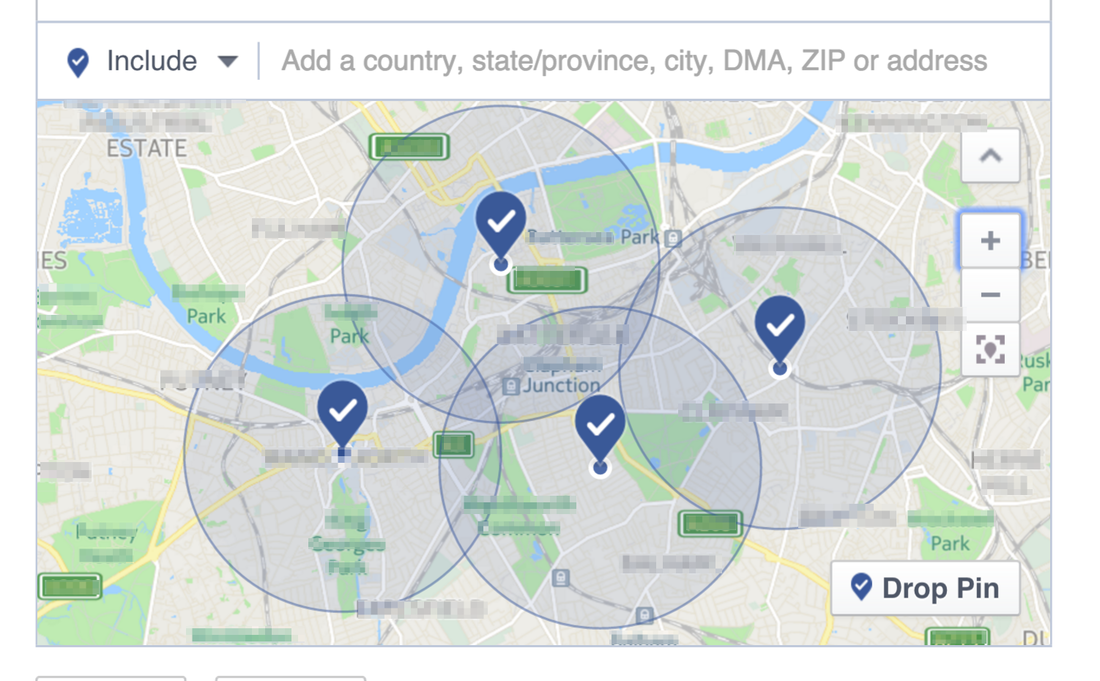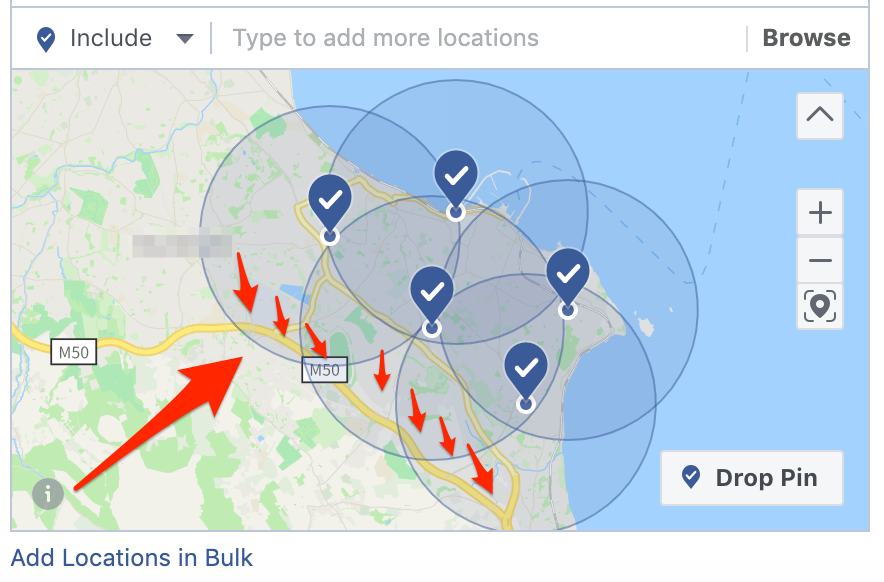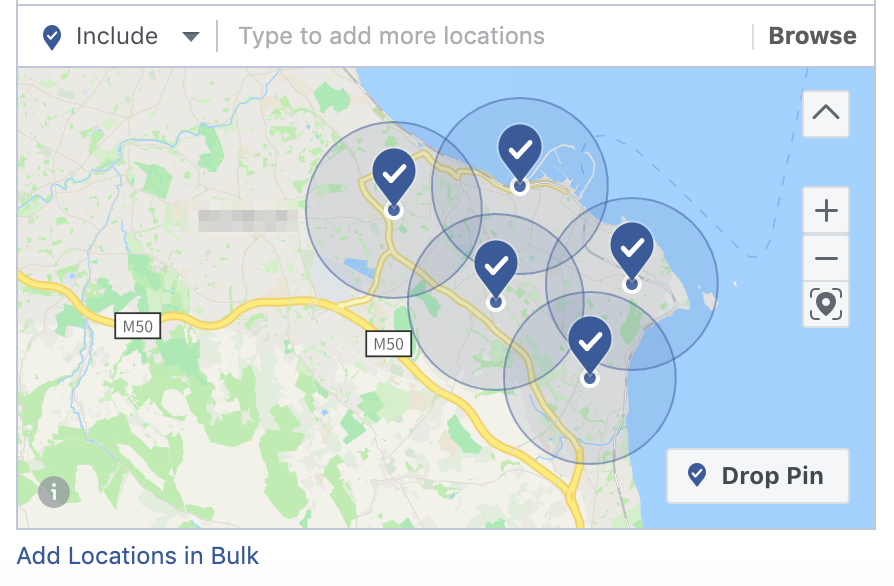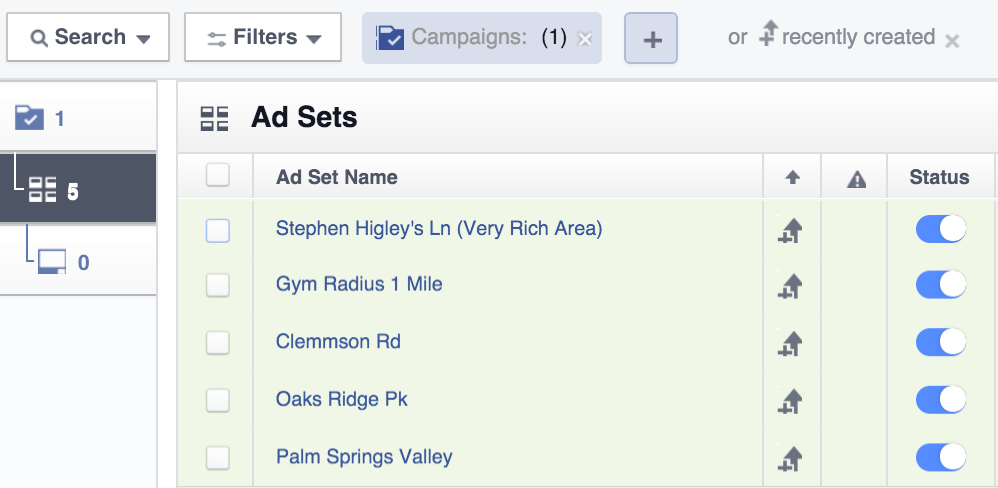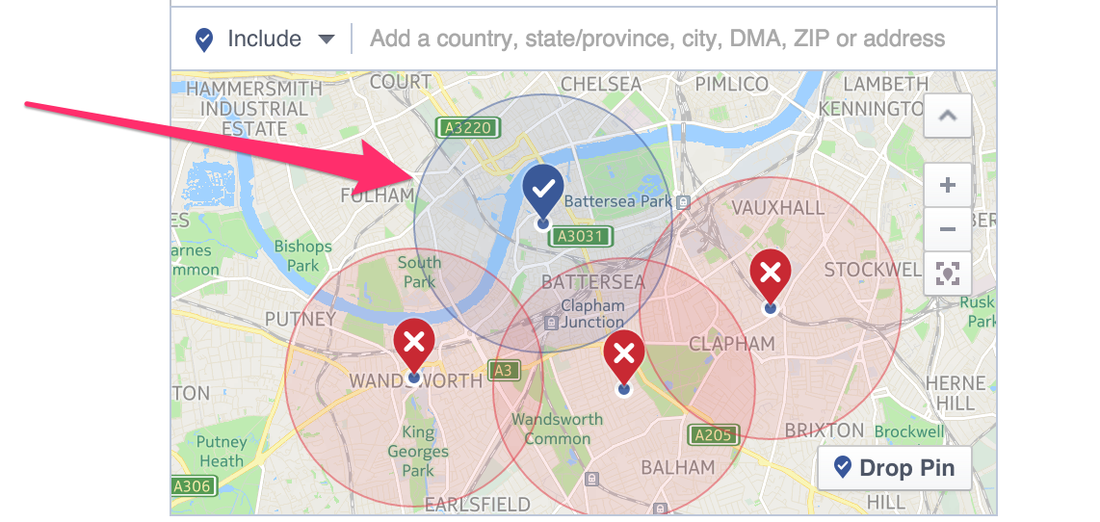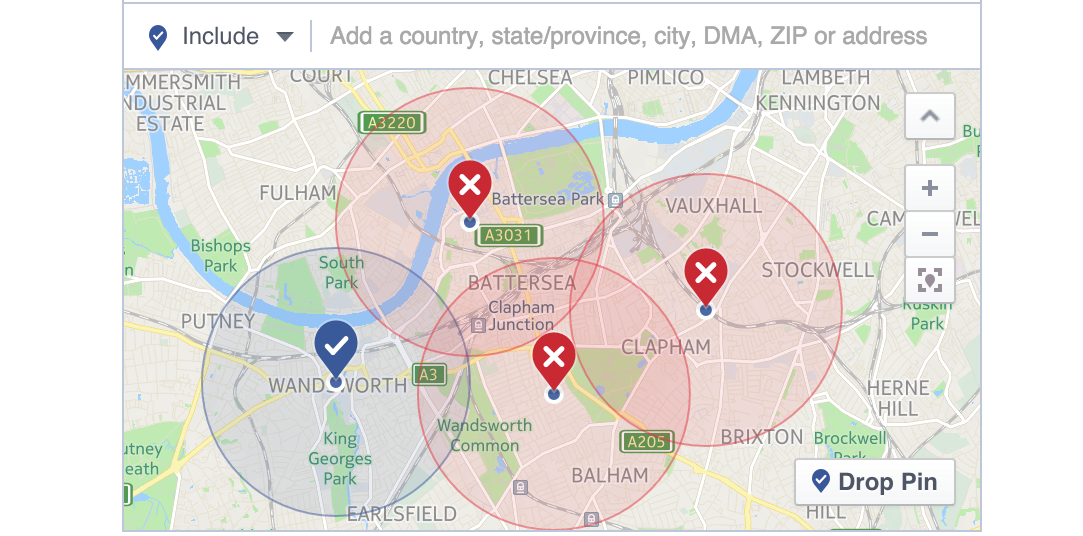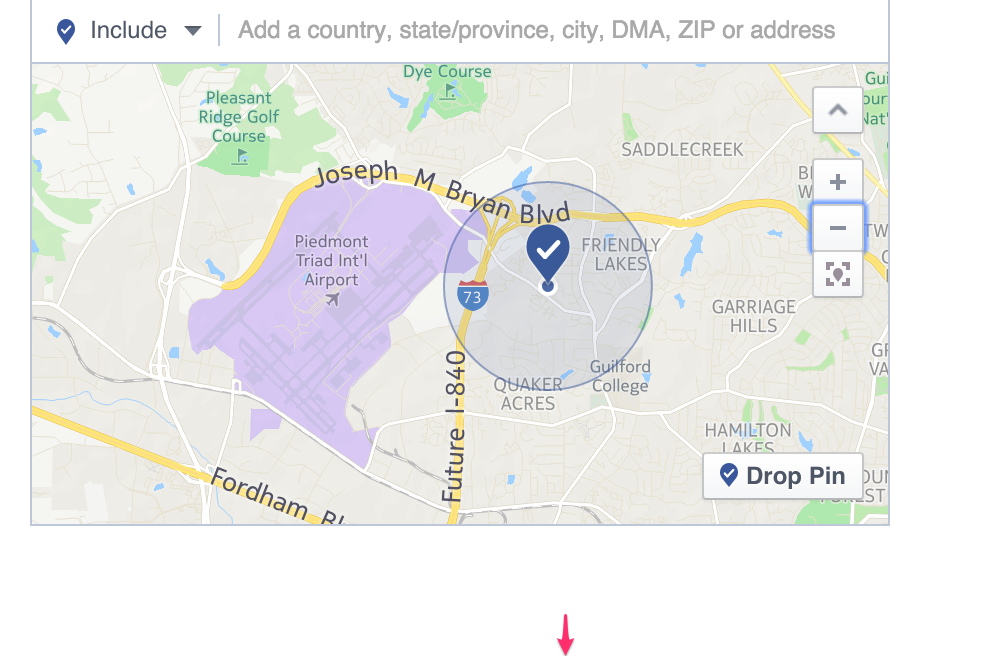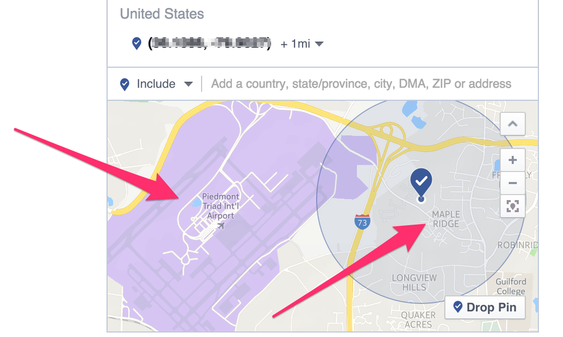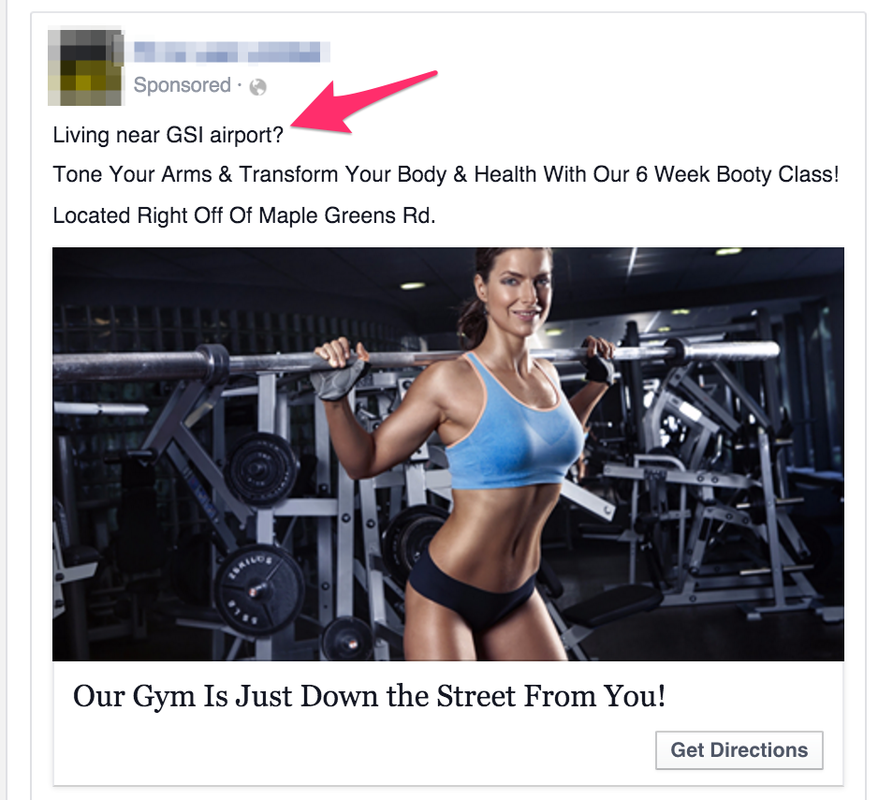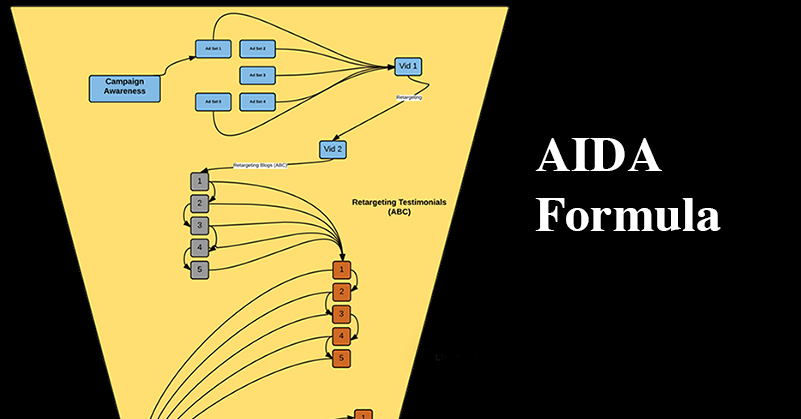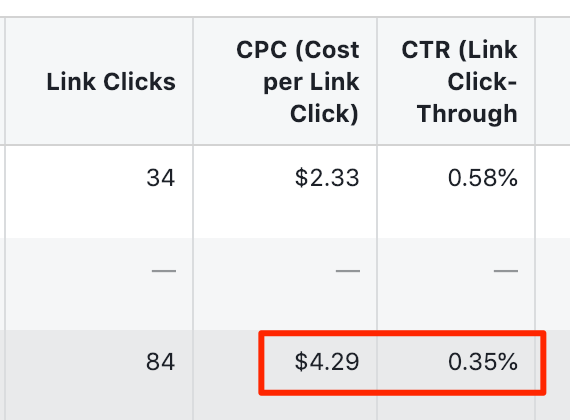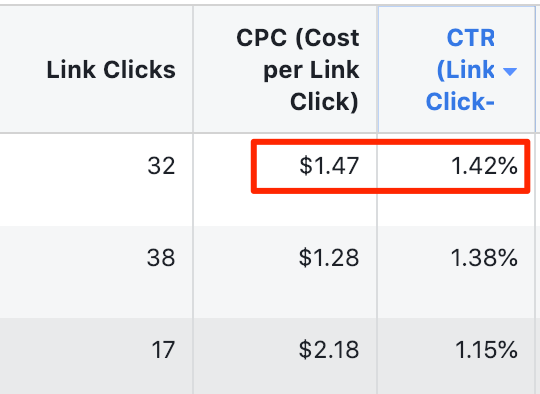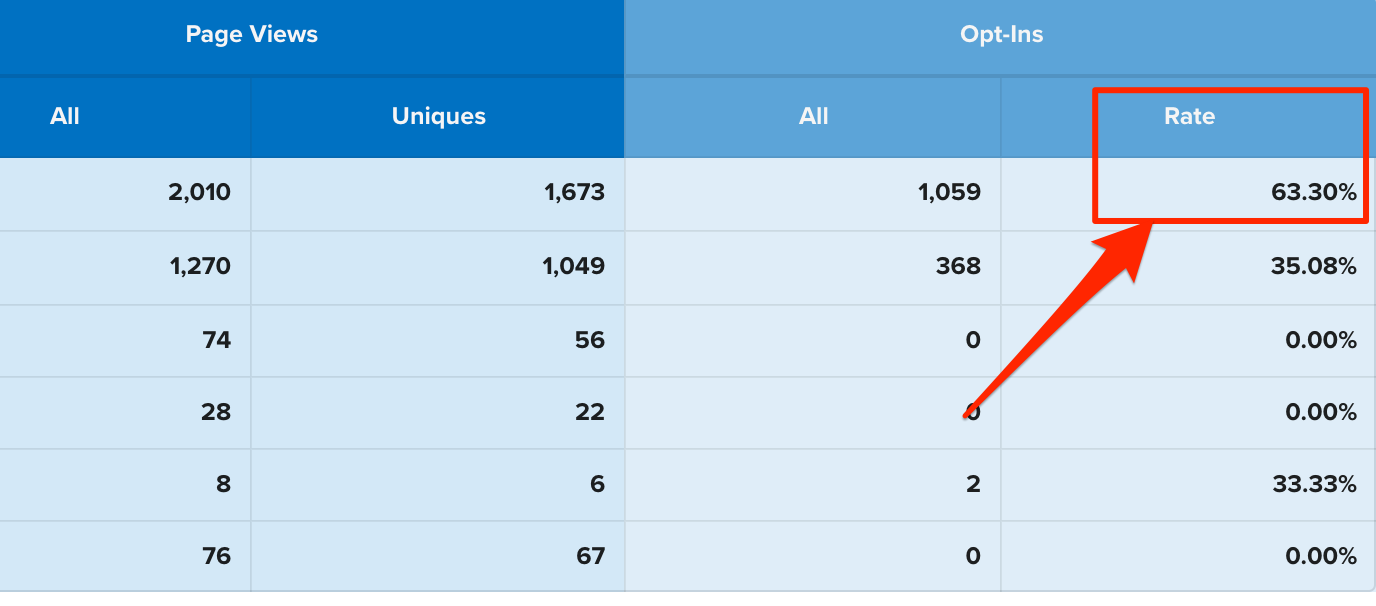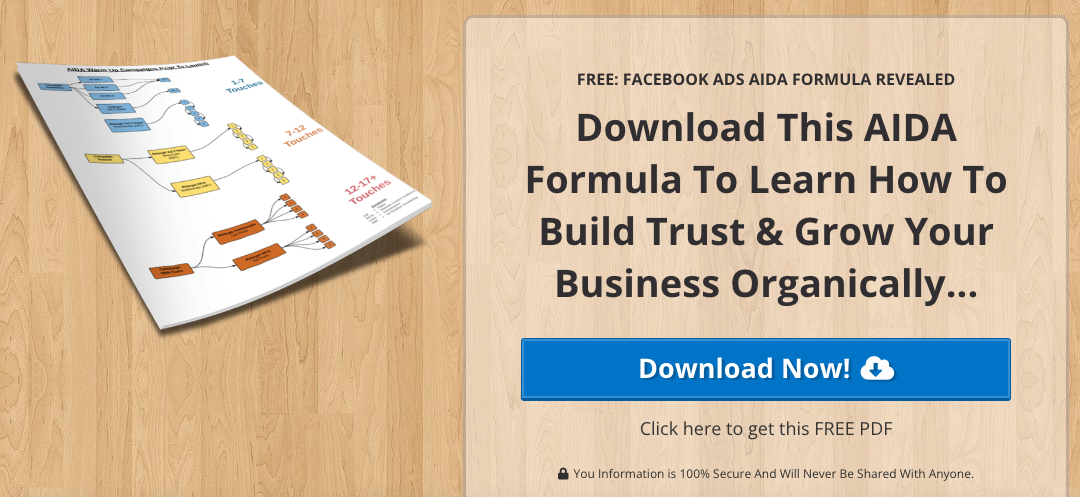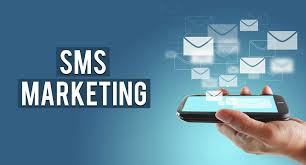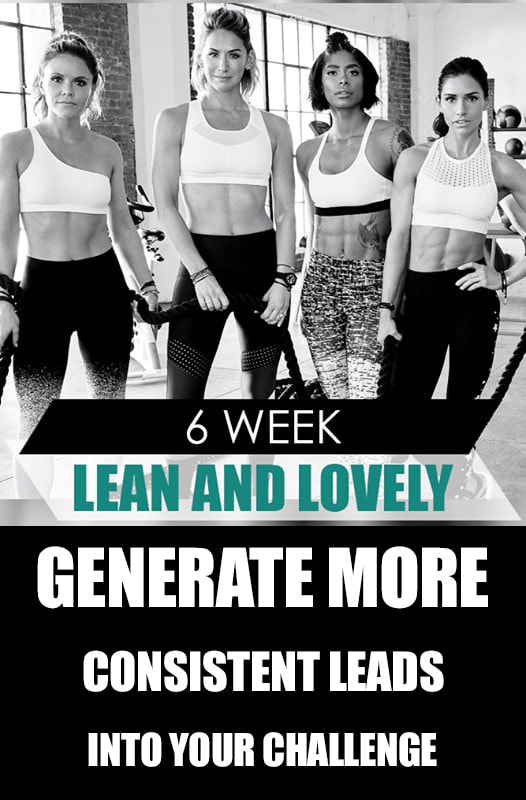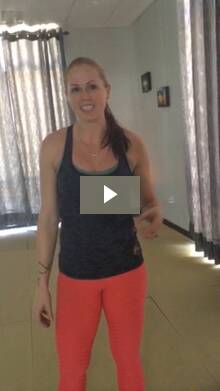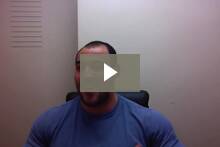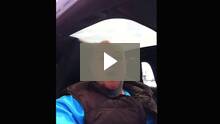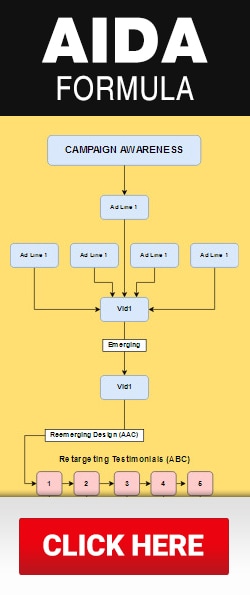This Could Be The MAIN Reason Why Your Ads Are Underperforming... Read below!
Before I begin let me tell you a little bit about wolves...
How Wolves Use Their Strategy To Hunt
Wolves use specific "strategies" to hunt their prey. Wolves are able to evaluate the vulnerability of a moving animal, and the pack as a whole attempts to funnel prey into terrain that favors capture.
A single scout may use intimidation to lure the prey into running into a desired location, while the pack will carry out the ambush. How You Should Be Using Your Facebook Ads Strategy!
I am going to show you what you should be doing when it comes to building a Brand on Facebook and establishing an audience that will praise you, love you, and of course convert and refer people into your services.
The AIDA formula (for facebook)
In order to get the best quality leads and clients as possible. To get the cheapest Cost per Acquisitions in the auction, you need to be implementing the AIDA Formula.
What they AIDA formula does, is it builds a solid foundation of a brand to the market. Individual to who you are and what you represent. It creates trust, rapport, and of course build a strong relationship so that you can convert your leads easier, and get more and cheaper leads through paid advertising. So there are people who are aware of their problem probably and aware that there is a solution but they may not know what that solution is. Therefore this is the phase where we want to educate and give value. It builds instant credibility and establishes yourself as a dominating authority in your industry.
Awareness... This is the initial phase of introducing your brand to the audience. You are likely dealing with an audience who does not know you. In this part of the funnel they are skeptical about your services and don't fully understand what it is you offer. They don't believe you yet, and it is important in this phase to use our Awareness campaigns to target the right market with the right message.
So the quickest way, to get their attention and have them "aware" of your brand is to provide valuable content that is relevant to their needs and problems. If someone is suffering from a specific need, we should call that market out and use that as a reference to prove to them that we can help them with that problem. See the example below...
Interest... This is where you want to provide them more in dept content. Specific to the type of an ideal customer you are looking for. So for an example, if you are offering a specific program to people, it is best to give them blogs that talks about the program. You may want to provide them problems and solutions what they are experiencing and at the end of each piece of content give them the importance that they can get a full book that talks about the program.
You may also push them to a blog that talks about their pains, and you can provide a case study about "Sarah" or any one of your clients who was experiencing that pain or problem but decided to sign up for your program and in a matter of 12 weeks got specific results. This encourages them to take "interest" and pursue the intent of signing up for the program.
Desire... The intent of signing up for your program is pretty high but it is lacking one little thing.
Proof... This is the area in which you want to push video testimonials, case studies, link post ads to third party reviews, social proof, and all you can provide to show them proof that other people LOVE your services and are getting RESULTS! This completely gets rid of that skeptical feeling most people have, and builds solid trust so that it becomes easier for them to financially commit to your offer.
Action... Running Your Offer!
THE Launch
The "Action" part of the AIDA. This is the actual launch where we are going to run a Facebook appropriate offer.
What ever program you are running this is the Facebook ads that push people to a landing page asking them to sign up for the program that they are eager to do by now! It also involves a unique strategy behind how to properly set up your ads, use the correct ad creative and copy, while also setting up a retargeting list of people who sign up from the page and doesn't pursue the program along with people who do pursue the program. Normally, we like to retarget "sign-ups" with testimonial videos, also reminder right column ads (that encourage them to either finish filling out the application form), or call us now ads or even messenger ads that encourage them to call your phone from the ad click itself or go straight to a conversation in messenger to get some questions answered. THE Hunger Trial
Once you pause your launch. You should run a Hunger Trial campaign.
A Hunger Trial is a short time promotion of the same event. But only this time they are going to a page that says ALL SOLD OUT! The reason we take them to a page that says ALL SOLD OUT is because... 1. Because if you used the AIDA system it actually should be all sold out! 2. You need to let people know what they missed out on, it will make them be the first ones to sign up when you do a promotion next time. 3. If everyone sees people buying it, they will likely buy it! 4. Keeping things exclusive makes it more interesting to the user. If your favorite desert is apple pie, after eating it everyday you will likely not want it anymore. But... If you eat it only once a month, you CAN'T WAIT until you have it in your hands next time!
When we create our campaigns for our clients, we always recommend doing Phase 1 first. It actually helps in so much of a way to create content that can educate the user and therefore their relationship with us is much more strong.
They start to trust us and look for our advice as an authority in our industry. Once you do that, when you promote an offer to them they are so much more of a higher quality lead. Conversion costs are cheaper and at the same time we are targeting only to a specific audience who engaged in our content, and saw our social proof that way they feel much more better about committing to our services. > Get the AIDA Formula Layout Here <
More than half of U.S. residents use Facebook multiple times per day and 74% of Facebook users use the site daily! Considering there are 190 million users in the US, you have the ability to reach 140.6 million people every day! This is why 93% of marketers use Facebook advertising regularly. If you are not advertising on Facebook, you need to think again. Below are three key ways to improve your Facebook ad campaign. 1. Know Your Target Audience The first thing you need to consider when creating a Facebook ad campaign is the demographic you’re targeting. Some of the most important demographics that influence buying behavior are age, gender, location, language, income, occupation, and marital status. Once you’ve input these characteristics, you need to think about interests, hobbies, and lifestyle choices. I find it helpful to imagine a stereotypical member of your target audience and jot down his or her interests. For example, if you’re a crossfit gym, some interests you may want to include are “fitness”, “powerlifting”, or “weight training”. Create Custom Audiences If you want to target people who’ve already interacted with your business, you can create a custom audience with customer files. Simply import your existing customer subscriber list and Facebook will serve your ads to those individuals. Use Pixel and Conversion Tracking This method is extremely effective for retargeting website activity. With Facebook pixel you can create different audiences based on your website pages they’ve visited and the actions they took. For example, let’s say someone was on the sign-up page but didn’t actually sign up. Facebook will serve ads to those individuals! Create a Lookalike Audience This method is arguably the most effective way to reach your audience because Facebook uses its algorithm to clone your existing audience and create one that targets similar individuals. Think about how effective this can be after using pixel. You can target people who are likely to sign up! 2. Create Quality Content You need convincing images and copy to intrigue your target audience. Here are some tips to display content that will resonate with your audience in your Facebook ad campaign. Choose appropriate images If you’re a dental practice, you shouldn’t be picking any image of a doctor’s office. You want to pick an image where the dentist and patient are clear. You should also pick an image that doesn’t exclude any members of your target audience. For example, don’t pick an image with only men or only women if you’re targeting both genders. Write persuasive copy You need to think about the target’s language choices based on interests. For example, if you’re targeting baseball players, then you may want to include clever metaphors that baseball players would find comical. Also, the language you use to target different demographics should vary. 18-24 year-olds don’t speak the same way 35-44 year-olds do, so you need to write copy accordingly. Below are some questions that will help you generate effective content. - What are the target’s issues, needs, pains, challenges, hopes, and fears? - How do they feel when using the product or service? - What do they know or think of our brand? A Video May be Your Best Option A product demo is an excellent way to show the customer your product is actually functional. People want to see the product/service in action! 3. Place Your Ads Strategically
Automatic placement is extremely helpful because Facebook will disperse your advertisements across the spaces that’s most likely to reach your audience. If you want to choose exactly where your ads are displayed, you must be strategic. Here are some tips to place your ads effectively. Consider Your Objective If you haven’t advertised on Facebook before, the Facebook News Feed is a great place to start. This is less intrusive than placing your ads in someone’s Facebook stories or in their messenger inbox. Consider Your Audience How does your audience view content? If you’re targeting a younger demographic, Instagram may be a good idea because a large number of users are on the younger end. If you’re targeting someone with a lower household income than average, Facebook marketplace may be your best bet because individuals are looking for cheap options. Now that you understand the basis of Facebook advertising, let’s take your business to the next level. Contact us to learn about our personalized and fully-integrated digital marketing plans! Instagram is one of the most important social media channels for fitness businesses to market their brand. It’s estimated that the number of Instagram users in the US will grow to 125.5 million active users by 2023. The network already surpassed the one billion mark for active monthly users around the world in June 2018.With 90% of accounts following at least one business on Instagram, brands are looking to extend their reach on the popular social media platform. Yoga studios, instructors, gyms, and trainers use Instagram to connect with their target audience, drive value, and maximize brand awareness.Here are 10 tips to optimize your fitness Instagram page for success. 1. Business vs. Personal Account When setting up your Instagram page, you have the choice to use a personal or business account. The main difference is that with a business account, you access specific features, including insights, Instagram Ads, and you can display contact information more efficiently. If you have a business account, you can free up your bio to display more valuable content that will drive searches and find your ideal members. You don’t have to stuff all your contact information into your bio as it’s displayed more effectively with a business account. You gain access to vital data that helps you to create a strategy with a more significant impact. 2. Engagement is Everything Your Instagram posts, Stories, IGTV, and Lives should all encourage engagement. You want people to comment and interact with your brand to help build your community and show your core values. Instagram’s algorithms are gradually moving away from the classic likes and followers. This can already be seen in the platform’s move to hide likes. Engagement now goes beyond traditional number counts. Engaging your audience is so important, it’s not enough to just encourage a double-tap. You can measure engagement using metrics like reach, impressions, direct messages, followers, website clicks, comments, views, and saved posts. 3. Share Success Stories Instagram is a great place to inspire your audience. Everyone loves a success story; it makes your brand more relatable. If one of your members has hit their weight loss goal or achieved a personal best after working out consistently at your gym, show it off. Maybe you’re a yoga studio with a member who wanted to strengthen their back and reduce pain. If they have achieved that, share their story. This not only acts as social proof of your fitness studio but inspires others to achieve their own fitness goals. When you’re pushing out relatable and authentic content, it helps to promote engagement and attract new members. 4. Use Instagram TV Instagram TV or IGTV, allows you to post long-form video content. Videos can be up to 10 minutes in length. Video content continues to be incredibly popular and a great way to drive value and communicate with your audience. Initially, it did take a while for IGTV to pick up, but now big names and brands are integrating IGTV into their social media marketing strategy. If you want to start using IGTV for your fitness brand, we’ve pulled together everything you need to know to begin and how you can use it for your business. 5. Leverage Instagram Stories
Another popular Instagram feature is Stories. Instagram Stories allow you to share different content to engage your audience and grow your brand. Leverage IG Stories and create interactive content such as: - Polls - Surveys - Quizzes - Instagram Stories stickers - Countdowns Whether you’re a local boutique fitness studio or international franchise, IG Stories should be part of your overall Instagram strategy. It allows you to post more organic and authentic content. Consumers want brands that are honest and transparent. Stories can help you achieve this while creating a lasting connection with your audience. At the same time, you can show off your services and give potential members a behind the scenes glimpse of your studio or gym. 6. Highlight Your Personality The personality of your brand shapes your messaging and helps to build a trusting relationship with customers. Think of your brand personality as human traits that you would apply to your business. You should highlight your personality in everything you do, including your social media strategy. Tell your audience why they should follow your Instagram page, how you can help them, and why they should stick around for your content. With IG Stories and Live, you have the perfect opportunity to convey your authentic brand self. 7. Authentic Content Demonstrating authenticity on social media is essential for your business. When social media is dominated by influencers and businesses pushing perfect images of unattainable body shapes or sizes, consumers begin to lose trust and just switch off. People are increasingly looking for authentic content from sources they trust. It means showing the real side of your business. Capture genuine moments with real people. 8. Niche Influencer Marketing Instagram influencer marketing isn’t going anywhere, but brands are looking beyond accounts with a massive following. Niche or micro-influencers who have a very engaged community are increasingly working with brands to build awareness and reputation. What’s interesting is that the demand for authentic content is spilling into influencer marketing. While many influencers still have a gorgeous and perfectly planned Instagram feed, users want a feel for real life. They want untouched photos, and behind the scenes fails, not just perfect content. 9. Make an Instagram Content Plan It may sound like an obvious one but make a content plan. Create a content calendar where you decide on themes, topics, and draft posts in advance. There’s more to Instagram than posting, with IGTV, Instagram Live, and Stories, you have a lot of features to stay on top of. Think about captions, format, the type of content you want to post, use hashtags, and any other features you want to use. Depending on your strategy and needs, you may find it useful to use a content planning tool such as Buffer, HootSuite, Later, or Sendible. 10. Be Consistent Whether it’s how you convey your brand or the frequency that you post, be consistent. Consistency is key to delivering the right message to your audience. When you are consistent, it allows your brand to grow in both reach and engagement. As social platforms become even more crowded, being consistent and authentic is key to success and standing out from the competition. Social media moves quickly. That’s why posting regularly is vital so that you don’t become obsolete. In Summary Social media is always changing and evolving, and Instagram is no different. As new trends arise, you will need to adapt your Instagram strategy to meet your target audience’s needs and demands. By sharing authentic content and leveraging Instagram’s most popular features, you can expand your Instagram reach and continue to build your brand. Facebook marketing has the potential to transform a personal trainer’s business, but only if the advertising platform is used correctly.With just a dollar a day and setting up your personal trainer Facebook ads to hit the right audience, you’ll have a great chance to stand out in a crowded market and get more leads.
In this article, I’ll show you how. Before we get into the nitty-gritty of these Facebook marketing tips, let’s make clear your goals when using Facebook ads. Whether you own a brick-and-mortar or online business, you should aim to: 1. Build up your authority and likability, or “know-like-trust” factor 2. Capture leads or contact information 3. Make sales or generate new clients Note that those three items are listed in order of importance. That means your top priority is to prove to people that you’re worth listening to. On the surface, they sound obvious, but you’d be surprised by how many fitness professionals jump straight to number three and then spend most of their money on this part. And that’s where they go wrong. Mistake 1: They fail to provide value When it comes down to it, we sell relationships. This means that it doesn’t matter whether a program lasts three weeks, three months, or three years; a prospective client would have to be okay with spending a lot of time with you–in person or virtually. Obviously, if they don’t like or trust you, they definitely will not be interested in investing in you or their time with you. In order to get people to buy in, you need to consistently provide value to your fans and potential clients. Value comes in all forms: articles, webinars, videos, and Facebook Live events. Simply, put yourself in the mind of your current and prospective clients and ask, what are the common questions or struggles they have? Turn those into content they value. Mistake 2: They fail to capture enough leads Capturing leads is definitely an important part of your plan when coming up with Facebook marketing ideas, yet most fitness professionals only do this sporadically. Typically, lead generation makes up only a small percentage of their overall budget when marketing on Facebook. It’s important to get your prospects’ contact details so that you can interact with them outside of Facebook’s rules. And in case Facebook ever shuts down, you’d still have access to your customers. Mistake 3: They fail to compete against bigger, more recognizable companies While I harp on fitness professionals spending a disproportionate amount of their budget on selling, I do recognize that getting more clients is the key to growing their business. However, if all of your money is spent on promoting your 21-day fat loss program that’s the same as what 10 other gyms offer, the prospect has nothing to compare you with. The decision, then, comes down to the cheapest price. And the last thing you want to do is compete on price. Further, how can you hope to compete with massive companies that have endless marketing budgets, like Beachbody, if you only focus on making the sale? Chances are, your prospect has heard of Beachbody, not you, and are more likely to buy from a name they already know. So don’t make those mistakes, refine your strategy, and get ready to blow your competition out of the water. For just $1 a day, you can use Facebook ads simply and effectively Facebook has moved toward a video-centric platform. That means videos are one of the quickest ways to allow your followers or prospects to get to know you. Also, they’re one of the cheapest forms of advertising on Facebook. We’ll get into a play by play of the details, but here’s a quick overview of how it should all play out. To start creating videos, write a list of 15 to 20 different topics (e.g., “3 core exercises for a flat stomach”; “5 simple meal prep tips”; or “3 stretches to do if you sit behind a desk all day”) that you can create a video around. As far as making the video, you just need a smartphone to shoot and upload. Ideally, these videos should be about two minutes long. Don’t get too hung up on the length; just worry about making the content amazing. You can also use video testimonials with the dollar-a-day method, as they help you establish credibility and your ability to get results with clients. We found that with local businesses these have been the most powerful ads we can use to get new clients in the door. The first time we used this with a gym in Ottawa, we were able to nearly double the amount of sign-ups for their high-priced transformation program from 21 to 40. Once you have your list of topics, film three to five videos at once to do a bunch of the work all at once. Pick the topics that you think will be the most helpful to your audience based on your prospect’s goals and what you know about your audience. Over time, you’ll be able to see which topics work best based on which ones get the most engagement (likes, comments, and shares). Once you’ve filmed your videos, create a post for each one on Facebook. I recommend publishing no more than one a day to get as much organic reach as possible. Once that peters out, and few people find the post on their own, it’s time to spend money. Here’s how. Setting up your target audience for your local business First, open up Ads Manager and click on Audiences; Next, create a Saved Audience; Then create your Boost Audience. Use the following steps: Step 1: Insert your address and radius, or zip codes. If you use a radius, somewhere between four to 10 miles works well. You will know better than I on how far people will drive to see you. Make sure the radius fits your business. Step 2: Pick the age range you want to target. Step 3: Choose the sex of your target market. For a lot of people, it will be both male and female, so just pick all. As long as the audience is under 100,000 people, you’re fine. If you want to narrow this down a bit more, I would recommend using the Connections option and choosing Friends of People Who Like Your Page. As a general rule of thumb, we only use this for businesses that have at least 800 fans, because if there aren’t enough fans, you narrow the audience too much. (By the way, this is a great way to add social proof to your ads, which is what most people forget to do.) If Friends of People Who Like Your Page isn’t an option, narrow it down by targeting specific interests. Picking things like fat loss or weight training is way too broad. Instead, think of brands like the Biggest Loser, Beachbody (P90X, Insanity), Jenny Craig, or Weight Watchers. (PTDC founder Jonathan Goodman suggests picking fitness celebrities who appeal to your ideal client.) Setting up the target audience for your online business Step 1: Choose the states or countries that you want to target. Step 2: Pick the age range that you want to target. Step 3: Choose the sex of your target market. Most people target either males or females, but choose your ideal client. Step 4: Choose your targeting interests. Think about your competitors, like those in the previous example, but this time we’re going to use a tool in Facebook called Audience Insights. This free tool within Facebook gives you so many more interests that you can use in your ads and help you find competitors that you’ve never even heard of. Step 5: This step is optional, but I like to try it because it offers that third-party endorsement. Under the Connections tab, choose Friends of people would like your page. If your audience size is at least 100,000, then I would start there. If it’s less than that, I would leave out this option. The right way to boost your videos Now that you’ve created your Saved Audience, which I would call Boost Audience, you’re almost ready to boost your videos. Before that, let’s create a Custom Audience based on video views. This is how you start to build an engaged audience who is invested in what you have to offer. Eventually, you can promote your programs, products, and free reports to these specific people, knowing that they are very interested in what you have to offer. Step 1: Choose Custom Audience. Step 2: Choose Engagement on Facebook. Step 3: Choose Video. Step 4: Choose either People Who Have Watched [at least] 75% of Your Video or People Who Have Watched [at least] 95% of Your Video. Step 5: Choose all the videos that will be using Create an Audience. Step 6: Type 30 in the “In the past” box to create this audience based on people who have watched 75% (or 95%) of your videos in the last 30 days. Step 7: Click the Create Audience button. When all is said and done, we’ve created the Custom Audience based on the length of the video they watched. Now you can start creating ads that drive to your program or opt-in page. Typically, retargeting people who watched either 75% or 95% of your video is what I would recommend here. The logic is that someone who watches 75-95% of your video is much more interested in what you do than someone who only watches 10 seconds of it. If they watch an entire video, they are much more likely to click on an ad from that page again when they see it. Depending on the length of the video you may want to try a 50% or even a 25% video view audience, but to start with I would stick with either a 75% or 95%. At the start, this audience may be very small, but the more videos you create and the more people who watch your videos, the bigger this audience will get. As Facebook marketing gets more crowded, you want to make sure that you are putting your message in front of the people that are most likely to sign up. A quick checklist to creating the perfect Facebook ad 1. Choose the best image for your personal training Facebook ad In general, avoid blue colors because they blend in with Facebook’s platform. Avoid any images with a scale, tape measure, or “before” and “after” as these will be disapproved. Use an image of someone who has your audience’s ideal body and is doing an exercise in the picture. Stock images that show off a person’s features, such as their abs, glutes, or arms. These are more often than not disapproved. 2. Make sure your image stands out Your image should have high contrast and stand out in the news feed. Think of an image with a silhouetted person doing a push-up or squat with a white background to make the pic stand out in the newsfeed. If you have the resources and know-how, split-test your images to choose which image people in your market are responding better to. 3. Use a headline to start your ad copy Your ad copy is the main text of the Facebook ad. This headline should speak directly to your reader’s needs. You want the person you are targeting to read this and say, yes, that’s me! A couple examples of this would be “Attention Toronto Moms” or “Want to Know How To Speed Up Your Metabolism?”. To make this stand out even more, I would leave a line between this headline and the rest of your copy. 4. Don’t overcomplicate your fitness ad Don’t try to do too much in your ad. The goal of your Facebook ad is to get them to click over to your landing page. And the goal of the landing page is to either have the person buy or provide contact details. Too often people try to sell their entire program in their ad. Further, the landing page can be a way to get around Facebook’s policies. There are certain things we can’t say in our Facebook ad, but we can use a lot these “forbidden” Facebook words on our landing page and sell people there. For example, if your program is about losing weight, you can’t say “lose weight” on Facebook, but you can say this on your landing page and actually describe what your program will do for them. 5. Sink your “hooks” in My suggestion is to actually create multiple versions of your ad on another document somewhere. This serves a few purposes: more practice and more “back-up ads” when one gets rejected by Facebook. Draw a line down a piece of paper and name the right side “before” and the left side “after.” Write how a prospect would feel before they did your program and how they would feel after doing your program. Next, describe what they’d have before doing your program and now what they’d have (e.g., high energy and motivation) after doing your program. Finally, write a list of all the things they struggled with before your program and all the things they now find easy after doing your program. Write down as many things as you can on both sides of the paper. Don’t try to write it like an ad, just get as many ideas on paper without judging them. Once you’ve finished, you can start to see the different hooks or angles you can use in your ad copy. Just taking the time to do this alone can be game-changing for your ad results. 6. Practice, practice, practice The more you write, the better you get at writing ad copy. And when you have multiple versions of your ad, you can easily replace it if it’s rejected by Facebook or if it’s underperforming. 7. Track and measure your fitness ads Once your personal trainer Facebook marketing is out there, pay attention to how your ads are doing. Metrics like click-through rate (how many people are clicking on the link in your ad), relevancy score (the more positive feedback we expect to receive, the higher the ad’s relevancy score), and frequency (average number of times the ad was seen). Here are some general metrics I use within my agency to determine how well the ads are doing and if things need to be changed: Click-through rate: You want this average to be over 1%; 2-3% is ideal. Frequency: Make sure this doesn’t go past 10. Relevancy score: 8-10 is amazing, 5-7 is pretty good, and 3-4 is okay; if it’s 2 or below, you should change either your ad or adjust your targeting. Outside of Facebook marketing, you want to be tracking the conversion rate of your landing pages. Even if you’re getting a high click-through rate, if you’re not converting, you’re not making money from your campaign. For local gyms and health clubs, advertising often starts and ends with fitness postcards and fliers. Those are both awesome ways to drive business, but we’ve also seen a lot of success for gyms that use digital advertising.
Many digital ad platforms, including Facebook, Instagram, and Google Display Network let you fine-tune your audiences based on different data points. For example, a display ad (the kind you find in the middle of a blog post or news article, or as a banner on a webpage) can be targeted by: - Audience location - Audience demographics - Audience interests - Audience behavior - Content topic - Content keywords If you decide to use digital advertising for your gym, picking the right audiences is key. Every club is different, so we would never suggest that everyone utilize the same audiences for targeting. However, there are some tried-and-true audiences that are optimal for most health clubs. Here are our top four favorite types of people to target: 1. People who are looking to join gyms and athletic clubs This one might seem obvious, but it’s a perfect example of how targeted the audience can be. This audience group takes out the guessing game of “who’s looking to join a gym?” and cuts straight to the point. Advertising platforms (like Google) have done the hard work for you, building a model of how a user behaves online when they’re about to join a gym. The average click-through rate on a fitness display ad is normally around .3%. We’ve seen up to a 2% click-through rate targeting people who are looking to join gyms & athletic clubs. Unfortunately, the network of people actively looking for gyms isn’t very big, especially when you’re also targeting by your specific location. So we have to combine this audience group with a few others to make sure you’re getting as many impressions and clicks as possible. 2. People who crave fast food I’m not sure if we should be proud or ashamed of this one, but the internet knows everything, and they even know the people who are most enticed by a McDonald’s Big Mac commercial. You may be thinking “what does someone’s cravings for a Big Mac have to do with wanting to join my gym?” I don’t know about you, but after I finish a huge fast food meal, the first thing I think is “I’ve got to go to the gym.” That’s where your ad comes in. While browsing the internet, the fast food cravers see your ads, then find themselves signing up for a free trial membership at your club to try to burn off at least a quarter of that Big Mac. By targeting this group, we’re able to anticipate who may be searching for a gym soon, getting your brand in front of them before your competitors have a chance. 3. People who are shopping for workout clothes This audience group is by far the one with the highest click-through rate. I’ve seen up to a 4% click-through rate; that’s 13x the industry average! We’ve noticed that a lot of people will actually buy workout clothes before even researching a gym to join. By targeting people who are shopping for activewear, we cut out the middle man of the audience having to do research by showing them ads to your club first. 4. People who have been to your website Chances are, the majority of people who visit your website aren’t going to become customers right then and there. That’s why it’s so important to stay top-of-mind, even when they click away. Targeting advertisements to your website visitors is called retargeting, and it’s one of the pillars of digital advertising. It takes a little setup, but once you get a retargeting campaign going, it can pay for itself in no time. Conclusion Finding people who are looking to join a club like yours using digital ads is easier than it sounds — if you know where to look. You can find unexpected audiences by targeting people who are shopping for workout clothes or even people who crave a good burger now and then. The best marketing is marketing that anticipates your prospects’ wants and needs before they do. Targeted digital ads are amazing because the targeting possibilities are endless. Well, maybe not endless, but you can target so many different types of people. It’s never been easier to send your marketing directly to the digital devices of the members that you want. Get more gym advertising ideas CPC Ninja is a leader in hyper-local print and digital marketing for the fitness an some other industry. We’ve helped tons of gyms, health clubs, yoga studios, and other fitness businesses boost membership and revenue, and we’d love to help yours, too. According to research, 90% of searchers haven't made a decision when they start an online search. Your ideal clients who are looking for exactly what you have to offer could be searching the internet right now. Do you feel that your online marketing strategy is following the latest trends and positions you in front of them? Basically, if your company focuses on health and wellness, you can benefit from implementing these fitness marketing strategies. #1: Entice New Prospects with Special Intro Offers While this tip might seem applicable to many industries, it is especially important for the fitness marketing industry, because the space is crowded. According to the International Health, Racquet & Sportsclub association, “the $30 billion health and fitness industry in the U.S. has been growing at least 3-4% annually for the last ten years and shows no signs of slowing down anytime soon.” So how can you stand out among the pack? You need a special way to entice new customers to come in. And I’m not talking a free bottle of water at your gym. Think something more generous, like a personal training session, a week of free classes, or a free first month for subscribing to use your health/wellness app. Whatever you come up with, it needs to be compelling to give prospects a taste of what they could be getting by incorporating your product or service into their lifestyle. #2: Provide Compelling Reviews and Success Stories One of the first things I do before investing in any health or fitness product or service is binge-read reviews. Since these types of products can often be expensive and may or may not yield results, reviews are very meaningful in this industry. Not only do you, as fitness marketers, need to solicit reviews from happy customers, but you also need to incorporate these reviews into your marketing tactics. For instance, if you have high rating on Google-approved review platforms, incorporate these into your Google search ads. Use customer quotes in your imagery for social and display ads. Or even go a step further and film a compelling customer testimonial video. The bottom line is that if your customers are happy (which they should be), you need to leverage this to help market your business. It will make a substantial impact! #3: Share Motivational Advice While the thought of sharing motivational quotes might make your eyes roll, don’t worry! You can do this in a non-cheesy way. For instance, sharing success stories from past or current customers (which also ties in the tip above, extra points!). Your potential leads may be considering your fitness offerings, but they may just need that extra push to make the purchase. How can you give them this? There are so many ways! Lose It!, The Boston-based fitness and health app often provides motivation in subtle ways with jokes, healthy recipes, and more. But their most powerful motivational pushes come from their customer success photos. #4: Be Transparent about Pricing There is nothing more frustrating than unclear pricing, whether you are unable to find pricing information online or deceived about what the pricing actually is once you’re ready to convert. In fact, doing either of those things is a great way to turn potential customers away. Make sure you not only provide transparent information around pricing in obvious places like your website, but also make it easy to find in other places, like your paid advertisements. This will ensure you’re getting the most relevant, and most likely to convert, clicks, because these individuals will be fully aware the associated costs. #5: Run Instagram and Facebook Ads to Your Target Audience Hopefully this is not a ground-breaking piece of fitness marketing advice. In fact, you may already be running these ads, but are you targeting your audience in the most effective way possible? The really neat thing about advertising on Instagram and Facebook is that you can get very specific in terms of narrowing down your audience to ensure your ads are showing to the right people, in the right location, at the right time. Take the example below. Here, I’m targeting an audience of people within a specific zip code who are engaged shoppers, newly engaged, and interested in weight training and yoga. 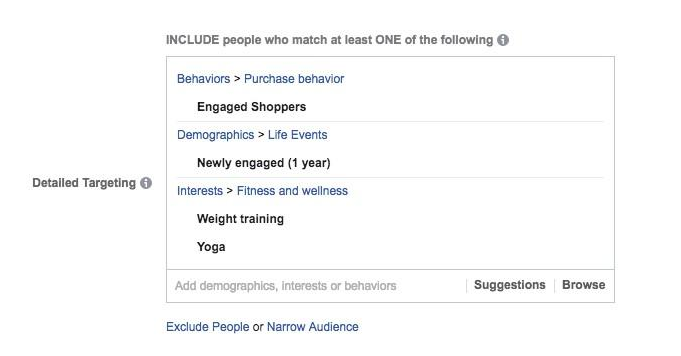 This targeting allows you to make your content laser focused on this audience. For instance, in the example above, you can craft copy about your product speaking to newly engaged brides and grooms who are looking to get fit for their upcoming wedding. This strategy adds another level of personalization to your advertising that makes your prospects feel heard and understood – and it may even compel them to convert! #6: Boost Your Budgets during Key “Weight Loss” Seasons If you’re involved in fitness marketing, you’re likely often tailoring your messaging toward individuals who are looking to accomplish some weight-loss-related goal, whether it’s to drop a few extra pounds or to make a larger lifestyle change. The thing about weight loss is that motivation often strikes during specific times of the year. There are the most obvious times, like New Years and right before a spring break or beach season. But you can also think outside the box, like wedding season or once the post-Thanksgiving bloat sets in. It may be different depending on where your business is located (think about the changes in weather), and the trends that your organization has seen in that past. Take into consideration all of these factors and use it to your marketing benefit by boosting your budget during these key times. Also make sure to do a stronger marketing push by becoming organized with engaging and seasonally relevant campaigns. #7: Go the Old Fashion Route and Mail Some Postcards Call me old fashioned, but there is something to say about getting a beautiful postcard delivered right to your home mailbox. Not only do I get extremely excited when I get mail, but it also instantly catches my attention when something is personally addressed to me. While mail campaigns were a big thing back in the day, with the rapid-fire growth of the internet and online advertising platforms like Google, Twitter, and Facebook, it’s easy to throw mailing campaigns on the backburner (with the heat off). Now is the time to get back in the mail game! Create a beautiful hand-written postcard addressing your lead by name and making them feel special. Whether you’re sending a season greeting or promoting a special entry offer, get creative with your mailing campaigns to spark the attention of your future customers. #8: Provide a Trial, and Make Sure It’s Approachable The biggest hurdle to joining a fitness program for many is not even financially related; it’s motivation related. It often requires changing a routine and lifestyle that one has lived and felt comfortable in for years. This is why you, as the fitness marketer, need to break down any entry barriers for your potential customers. One great way to do this is by offering a trial that allows leads to try out your service for a set period of time. Whether you are promoting a physical location like a gym or an online app, there is typically a way to offer a trial period. And I’m not talking about a 30-minute consultation at your gym. Rather, allow new potential customers to come in for a week or so. Giving them time to make this decision will increase the chances of getting a contract signed. They’ll be able to actually start making a new fitness goal part of their day-to-day and see that it is possible if you allow them to test the waters before committing. #9 Remarket to Remind Leads Why They Should Sign Up An incredibly powerful fitness marketing strategy that everyone in the industry should keep in their toolbox is the power of remarketing! Remarketing will allow you to encourage those on the edge, interested, but not ready to commit leads to come back and learn more. As we’ve discussed in previous tips, it can be tough to commit to a new fitness product or service so reminding leads what they are missing out on in a gentle way is key. Configure remarketing ads through Google and social networks, ensuring they are relevant to that audience segment. For example, if you are promoting a specific boot camp program make sure your ads are relevant to the leads who have been visiting those pages or interacting with related content. Keeping things as relevant as possible will ensure your remarketing ads don’t feel intrusive. Ready to strengthen your digital marketing for the new year? With these strategies, you can prepare for the future of digital marketing and get ahead of the competition! Location Specific TargetingIf you are looking to take advantage of Facebook the way your competitors are not, then you need to read this blog. I am going to explain in detail how I have been able to acquire higher quality leads for my clients by testing specific locations in their area of their market. leads too far away?Let me tell you first about a problem a client of mine had before he started with us. On our strategy call he discussed that when he ran his ads his leads was too far away. Now, keep in mind the target radius he was targeting was around 4 miles so that is what Facebook was supposedly targeting. What you have to understand is Facebook is not at all perfect and their occasions when leads are father way. So when I took a look at his account I found out something very very strange. His target radius base was actually hitting a major highway. (see below). So what we did was narrow that radius down so that it didn't touch that major highway! As soon as I told them to do that, the leads that started to come in was within the target area that they wanted. They were no longer getting people who were too far away. How To Test Which Areas Convert?For an example if you are running a 28 Day Kickstart, you are going to create a campaign inside of Facebook and lets call it 28 Day Kickstart (todays date). Inside of that you are going to have Ad Sets. These ad sets are your audiences. Whether it is male or female, old or young, or in this case location by location. Ad you can see above, I have created a new campaign and inside of that campaign separated my ad sets by location. I am targeting males only who are above 40 years of age that are busy professionals. This is going to allow me to separate my audiences and see which ones are responding best to my offers. :) Exclude Locations To Get More Defined TargetingI have included the above location set at a 1 mile radius. Always set it at the smallest radius unless your reach will be affected. Select all the locations that you are targeting and then exclude each of them but one. Repeat this for all of your ad sets excluding other locations but including the next one, and so forth. By doing it like this the other audiences should not be conflicted with each other therefore you are able to see specifically which location responds best to your offers. Being Relevant With Your Ad CopyNow that we have gotten our locations selected. I am going to create our ads. It is important in the world of interruption marketing (Facebook Marketing) to be as relevant to the users as possible. The above photo shows a radius based targeting of a neighborhood that is close to the airport. Facebook doesn't like it when we stress body parts. But we have sometimes seen ads like these get approved. As you can see how incredibly relevant the ad copy is to the user. I gave them a street name that is well known to most people in the area. Landmarks and well known street names are awesomely relevant! This is one of the many things you can do with your Facebook marketing. We also would like to test other things such as age groups, demographics, and especially mobile vs desktop! We have seen mobile convert most of the time at the lowest cost but desktop convert at a little bit more higher cost per leads but the leads are more higher quality in most cases. Bonus TipGo ahead and apply this to your campaign and let me know what results you get from it. Then the ad set that converted the best for you "duplicate" that ad set and select desktop only to see how much of a quality lead you get! Use the AIDA Formula To Create Trust, Good Will, & Authority In Your Industry!
Getting leads or getting a lack of leads is normally due to an increase in your cost per lead. Whether you are running Facebook ads and getting SUPER EXPENSIVE leads or no leads at all this blog will help educate you on the possible reasons so that you can take the necessary actions to fix your campaigns!
So take notes! reason #1: your lctr is too low!
Look at the image below. I am paying an expensive $4.29 per Link Click to get 84 clicks to my landing page. since I am paying $4.29 per link click and it takes me about 5 clicks to get a sign up I am spending about $21 per Lead!!!
This is CRAZY! The CPL is too expensive. So what can I do to fix this and get the Lead cheaper, and get more leads within my restricted budget?
1. The Link Click Through Rate (LCTR) is mainly determined by the Image or Video I am promoting. That image is not attracting my audience so if I change the image to something else I should be able to get my LCTR to about 1%. My ideal goal for this ad set is to get the LCTR to over 1-2% as that should give me a cheaper LCPC (Link Cost Per Click).
You see my LCTR is over 1% for this other ad set. Thus it gives me a LCPC of $1.47 which is better than last time. Thus for 32 clicks I spent $47 to get 32 clicks to get 6 Leads vs the other campaign spending $4.29 per click to get 84 clicks to get 16 leads spending $352. (remember I am averaging 1 lead per 5 clicks).
So if you understand this, change your image and test other variations of images and you will see your LCTR go up and your costs go down! Sometimes you may need to change the copy of the ad, and call to action (CTA) that will help increase your LCTR but the most common reason (most of the time) is the image or video of the ad! reason #2: your funnel needs work!
You see the Landing Page stats at the top? This is showing stats on clickfunnels which is what we use to create our funnels on.
This shows that one of my funnels is converting at about 63%. So that means that out of 10 people that visit my page about 6 of them sign up! If you are not getting a conversion rate on your funnel of at least 15-20% you need to fix your funnel. Whatever you are saying in your funnel, you need to ensure that your CTAs on your button are very specific about what is going to happen next if they give you their details. These are the following things you need to consider fixing on your funnel: - Your headline needs to solve a problem IMMEDIATELY! - Call Out a Market that you want to speak to! - Be sure to give them specific details about what you offer so that there are no questions and they can kindly sign up with a feel of ease. - Be sure to give value on the landing page. (if you don't what makes them trust you?) How about we just do this! You can sign up for my Lead Magnet! It will show you how to create a "Higher Converting Funnel" click to get access! If you are getting clicks, and no one is taking action on the funnel. Be sure to check to see if it works. If it does work, and there is no sign ups. Then optimize the funnel. Make it convert! reason #3: they don't know your brand
You could be also in a competitive market. If this is the case then you need to understand something!
This may be the most important thing I type on this blog. #1. You need to "Build a Relationship" with your audience through Facebook... So that people can get more familiar with your brand, and start coming to you as an authority in your industry. We are not doing this enough! More and More advertisers are filling up the feeds with none sense, and trying to get people to sign up for their services. It makes agencies like ours harder and harder to close clients but... We still get so many organic leads who sign up directly from our website because of one thing! PEOPLE TRUST OUR BRAND! They know we deliver results, and they know that we are all about giving value. This is how you need to set yourself apart from your competitors. You can do this! All you have to do is deliver content to your market, create a rotation of content, and then give as much relevant value to your market as possible to get them to start trusting your brand and signing up for your services! For more important information about how exactly to do this, you should download my AIDA Formula where it teaches you exactly how to do this step by step!
You Are a Local Business
How to determine how much you are willing to spend to get a lead, we are going to use an example of a local business. Now the prices, and varieties are all subject to an estimation but this would be a good point of reference to go from that you can replicate to your business.
How Much Can We Spend To Get a Customer
You have a customer who pays you a fee of $500 for your service for the month. He stays with you for an average of 6 months. Therefore the lifetime value (LTV) of him is about $3,000.
So we are willing to spend up to $500 to Break-Even(BE) to get a customer. So that if that customer stays for the second, third, and sixth month we know that we are making a Return on Investment. So we now know our break-even point. How Much Can We Spend To Get a Lead
So now that we know we can spend up to $500 to break even on one customer. How to determine how much we can spend to get leads?
First, lets say that you can sell 10% of your leads. That means that out of 100 leads you are able to sell 10 of them. These are cold leads, not warm leads. And lets say that you are able to sell 40% of your warm leads, and 65% of your hot leads. Cold leads are people who are not familiar with you or your brand. Warm leads are people who already know you a little bit, and know they have a problem and are aware that you possibly can solve it. And hot leads are already your customers, who paid you money and also know that you can solve problems. Some of them will purchase other services from you. So lets say that you can sell 10% on average of your cold leads. So if you got 100 leads that means you on average sell 10 of them. So doing the math now, you are only able to spend up to $20 to acquire a lead if you are averaging a 10% sales conversion rate from Lead to Sale and if the value of your customer is $500/month. That means that you need to get leads cheaper than $20 per lead to break even!
In the example above comes from one of our clients ads platforms excel sheet. The client has a monthly budget of $1k. That means their break even 2 clients since their client value is $500. So if they get only 2 clients from their $1k ad spend. They break even for the first month and make profit on the second, third month and so on.
Understanding Long-Term ROI
If you can understand the math above, (I know that it can be hard to understand sometimes) that means you know how to accurately measure your break even mark and now you can understand what it takes to scale your FB marketing campaigns.
But how do you measure Long-Term ROI? Well lets say you get those 50 leads but you only sell 5 of them (since your sales conversion rate from lead to sale is 10%). Then once you sell 5 of them, you put the remaining 45 on your email marketing campaigns. They see content from you for a while and then 4 months later you push them an appointment link in the email and they sign up. How can you track that person all the way back to the campaign that you paid for and measure a return because now you went from selling at 10% to possibly 20% over the long term length of lead nurturing. There is a way to do this without having to spending loads of money on tracking softwares. If you're interested I can show you how this works on a private call. Just click here!
One of the most important things about getting leads into your gym is the process of the lead! I created this blog for those of you who need the help with understanding your lead process and leaks so that you can fix them as soon as humanly possible!
Recap: How Does This Work?
For those that know, read on... And for those that don't know. Read this really quick. When you create a Facebook ad and you get someone to click the ad they often will go to a landing page that sells them into a opt in. This is called "Getting the Lead." We typically ask them for some small micro-committed details such as their name, email address and phone number. What happens after this is very important if you want to increase the sales of your business by improving the lead process!
Setting the Appointment: The Conversation
When a lead signs up they will get entered into a system or a process.
1. We will begin to email them some content that explains the value of what they signed up for and what is the next step. 2. We will begin to SMS text them to initiate the front end of the conversation. You see, the SMS is suppose to get them into a conversation that can commit them into being accountable when it comes time for the appointment. Most people who you call don't answer their phone because they likely don't know who it is! And besides, (at least for me) I won't answer my phone if it is from an unknown number as well. I do not know who this person is, whether they are a spammer or collections agency. It is important to get that initial conversation going to establish accountability. Setting the Appointment: The Phone Call
Every business model is structured different. But what we most see is after you have gotten a reply from your lead, now you can pull them into a conversation asking them when is a good time to get them on a phone call to discuss their fitness goals.
Get them into a phone call as soon as you can. If not right away! And hold them accountable for the time to chat! Obviously for the phone call! The phone call is NOT the sales conversation, it is for setting the appointment only! Anyone in sales will teach you this, and this is also a tactic used in dating... Appointment Is Set: Follow Up
Once the appointment is set, now it's time for the follow up! This is where most people fail. They do not do any follow ups at all. And expect people to prioritize their program ahead of their own life schedule! This in most cases won't happen because again people look at this as a luxury not as an necessity (even though we know it is an necessity).
They just are not that committed and life often does get in the way! It is up to us on how we move them from setting the appointment to actually showing up! It is important to add them into a appointment software such as schedule once and let zapier do the work with sending them a personal SMS message from you (via zapier) a day prior, and an hour prior to ensure they have directions to get to your place. What happens is this increases the chances of accountability. If for some reason they can not show up, then they will let you know and from there you can reschedule them into another date and time. The strategy used here is not about the SMS marketing, it is about how it is used and what message we use to increase the probability of a show up! Record Your Numbers
A common mistake among many is they record how many leads they get and sales. But they do not record the process between. Therefore it is hard to make decisions based on the process because there is not data to look from.
You need to record the following and date it on a per month basis on a excel spreadsheet. 1. Leads/Month 2. Applications/Month 3. Appointments Booked /Month 4. Appointments Showed/Month 5. Appointments Rescheduled/Month 6. Appointments No Showed/Month 7. Sales 8. No's 9. Cancelations 10. Upsells This alone will give you an idea of what changes you made to help you next month. And if those changes worked or not based on your past. And what you should use or revert back to to optimize to increase your percentages of sales! Without this data... You may not know what you should do, and how it will affect your performance of your overall lead process up until the closure of the sale. We are strategic, and we are very very keen on getting specific with our data so that we can make acute judgement calls within our ad campaigns to help increase the overall performance of our marketing!
Increasing Accountability As Sales Strategy
Data entry is a crucial part of the lead generating process. The cons is it takes a lot of your time. Good news is, we can do it for you! CPC Ninja aims to raise the confidence up by bringing the right message to the ideal customers without being too salesy. We will help you set up the whole sign up process. From creating the campaigns to series of follow ups through Zapier, your sales will surely skyrocket. If you want to deliver enticing messages that encourage commitment, CLICK
|

